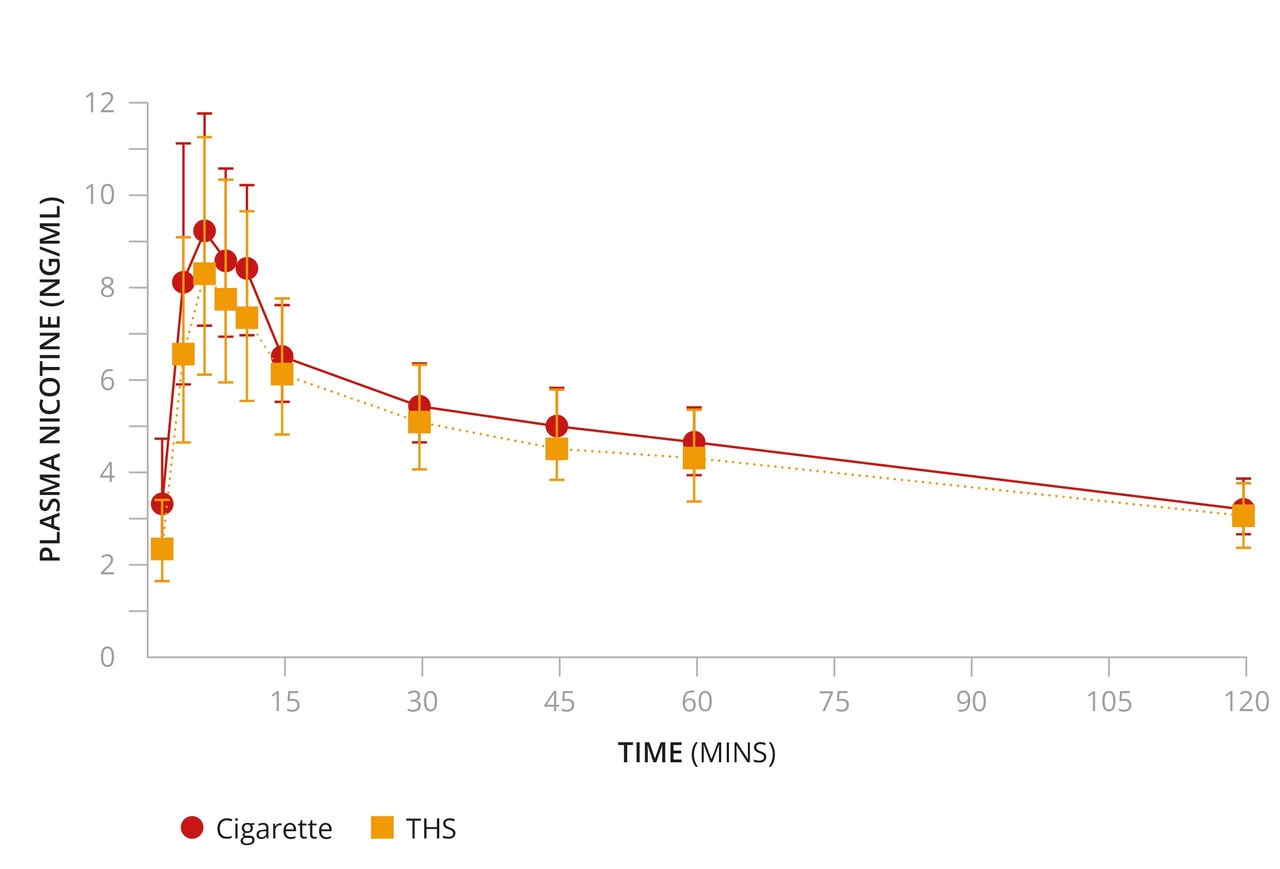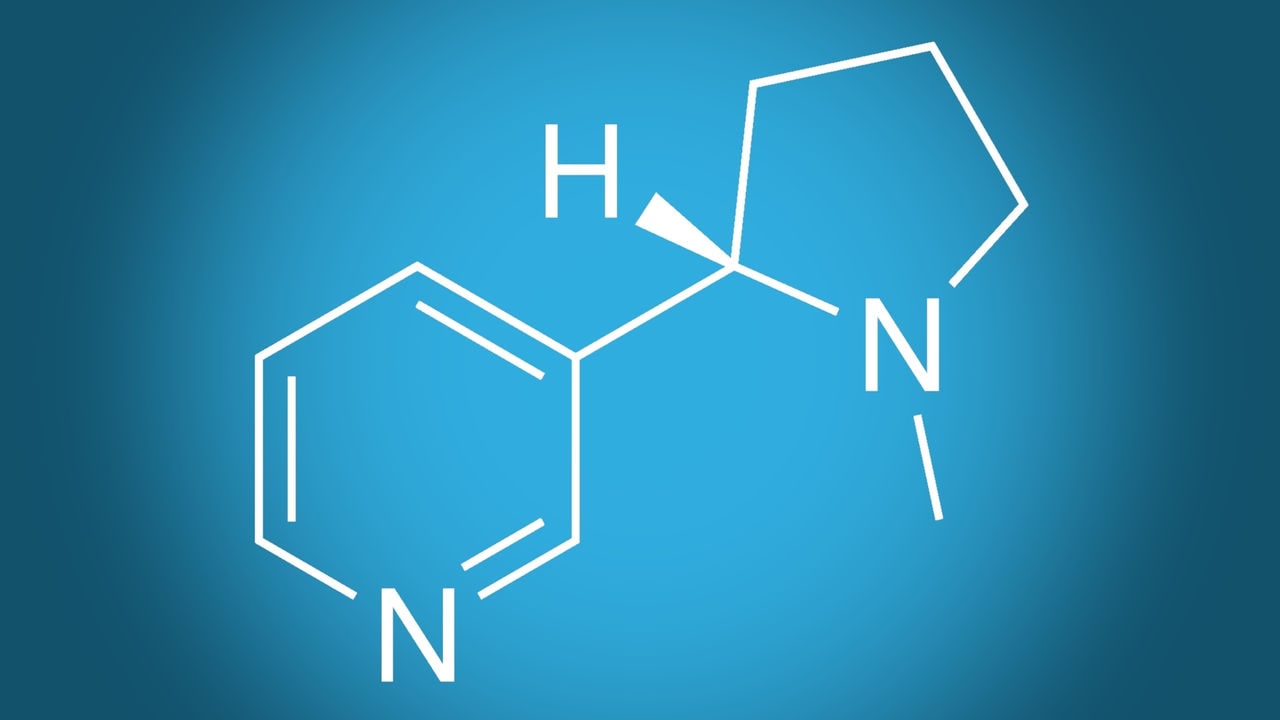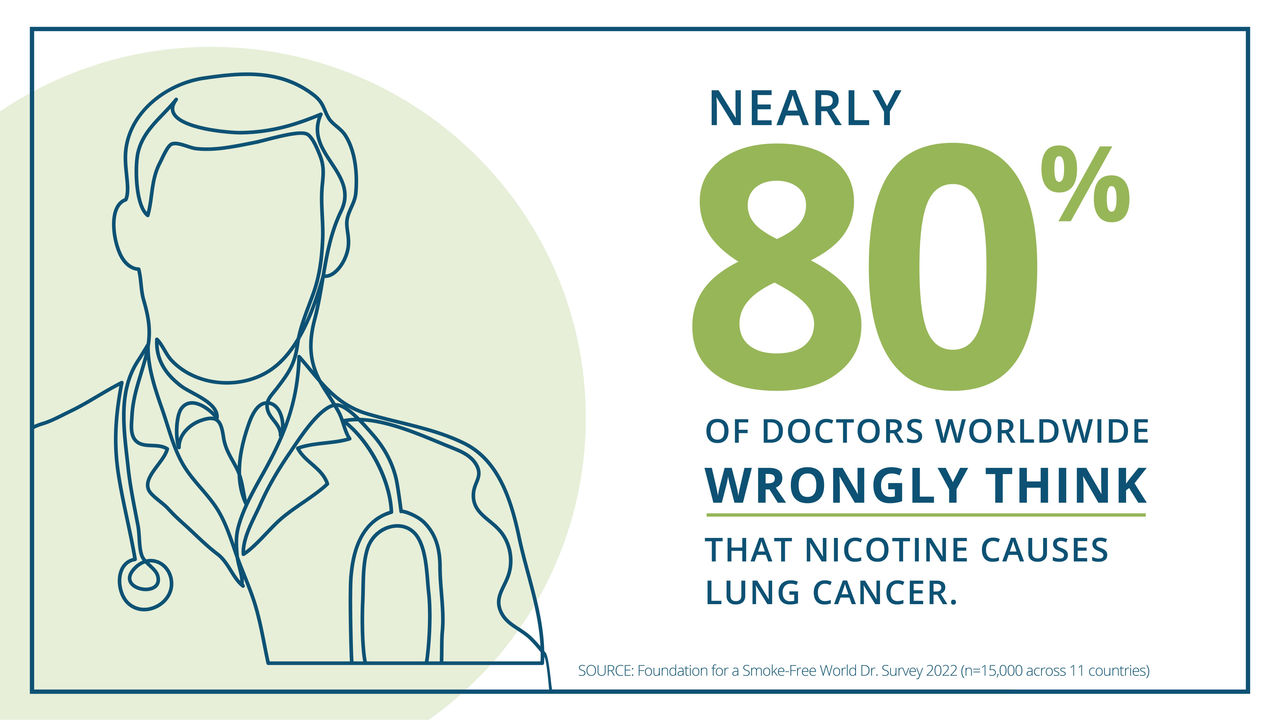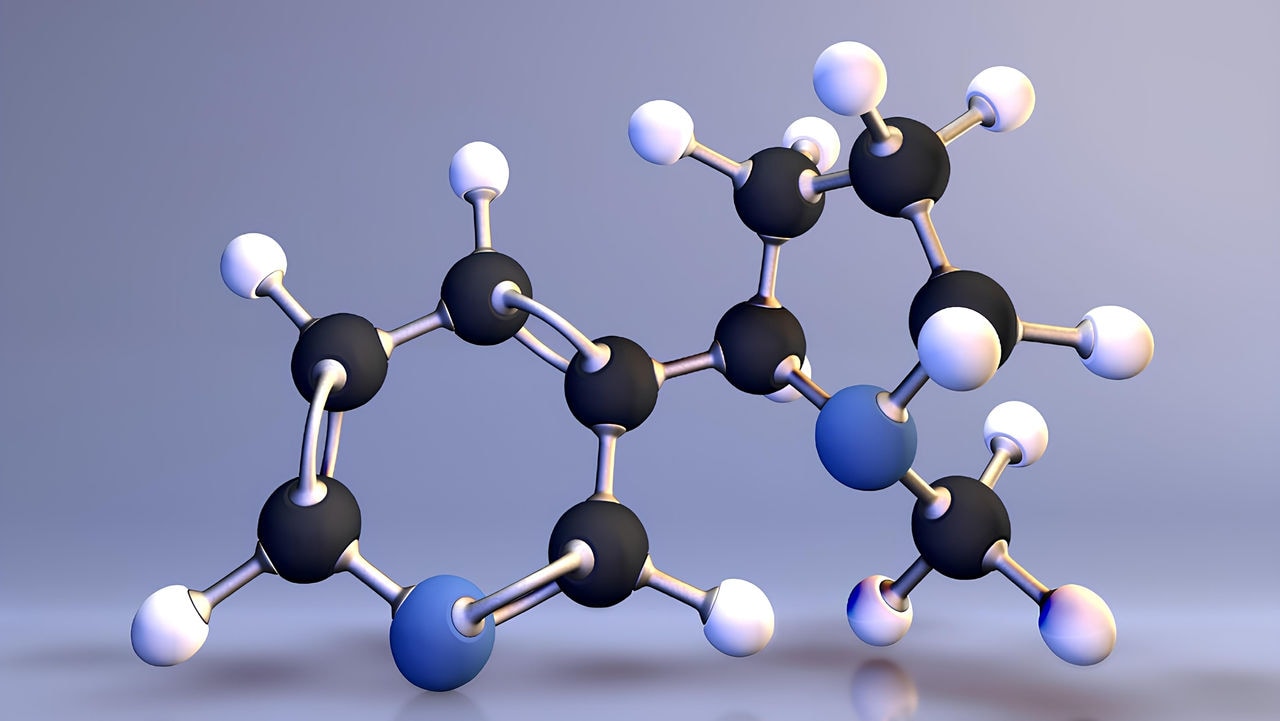Nicotine levels in PMI’s Tobacco Heating System
Nicotine content: How much nicotine is in the tobacco of a THS tobacco stick?
The nicotine content of a tobacco stick, also called Tobacco Heating System (THS) tobacco stick, refers to how much nicotine is in the stick itself, prior to being heated. In our tobacco products (including the THS, commercialized as IQOS), the nicotine comes directly from the tobacco, it is not an added ingredient. Because different tobacco blends can contain different amounts of nicotine, the different variants of the tobacco sticks can have different nicotine content. The values measured in our laboratories vary between 18-20 mg nicotine per gram of tobacco on a dry weight basis. This can be converted to 4.3-6 mg of nicotine per stick, based on the amount of tobacco in a THS stick.
This has been verified in independent peer-reviewed publications, which have reported nicotine content of tobacco in regular THS tobacco sticks of 15.2 ± 1.1 and 15.7 ± 0.2 mg/g and in a menthol THS tobacco stick 15.6 ± 1.7 and 17.1 ± 0.6 mg/g, respectively.
Read these independent studies for yourself:
What is important to understand is that cigarettes and heated tobacco products operate very differently: Cigarettes burn tobacco, and the smoke is inhaled while taking a puff. In between puffs, the tobacco continues to smolder, generating sidestream smoke that doesn’t get inhaled by the smoker. THS tobacco sticks, on the other hand, don’t burn tobacco, and they don’t produce smoke and sidestream smoke. When heated, they release a nicotine-containing aerosol with much lower numbers and levels of harmful chemicals compared with cigarette smoke.
Because the tobacco is not burned, and because there is no sidestream smoke, a greater portion of the nicotine that is present in the THS tobacco stick is transferred to the aerosol than in cigarettes—approximately 23% for THS compared with 11% for cigarettes.
Measuring nicotine content of tobacco products, however, does not provide information on the amount of nicotine that is extracted during product use (nicotine yield) or, even more importantly, on the amount absorbed in the body during usage (nicotine exposure).
Nicotine yield: How much nicotine is in the aerosol from one THS tobacco stick?
The answer to this depends on which measurement regime is being used but overall, nicotine yields are comparable between THS and cigarettes. The nicotine yield of a THS tobacco stick is a measurement of the amount of nicotine in the aerosol produced by the THS tobacco stick when it’s used in the heating device. When conducting aerosol research, this aerosol is generated using a smoking machine that follows a specific puffing standard, which dictates the puff volume, puff time, and intervals between puffs. The aerosol is collected, and the compounds are extracted and analyzed. These measurements, conducted using accepted international standards, are important because they provide a way to quantitatively compare the aerosol generated from different products.
In our research publications, we have reported the emission levels in the THS aerosol using a range of puffing regimes, including the International Organization for Standardization (ISO) regime and the intense World Health Organization (WHO) TobLabNet regimes. Nicotine yield from one THS tobacco stick using the ISO regime is 0.5 ± 0.1 mg nicotine depending on the variant. Using the intense TobLabNet regime, the nicotine yield increases to 1.24 ± 0.15 mg nicotine. The nicotine yield as measured using the ISO regime is required by regulation in certain countries, and therefore we report ISO regime measurements in those circumstances.
The European Tobacco Products Directive (2014) Article 3 sets limits on tar (10 mg), nicotine (1 mg), and carbon monoxide (10 mg) per cigarette. These limits are assessed using the ISO smoking regime or “ISO smoking regime”. The ISO assessment methods are developed in a typically lengthy process that is necessary to ensure the approach is correct and to build consensus among the members of the ISO working groups. The tobacco industry aids in this process by sharing knowledge and assists progress transparently.
Read more about the ISO standards:
- Directive 2014/40/EU of the European Parliament and of the Council of 3 April 2014 on the approximation of the laws, regulations and administrative provisions of the Member States concerning the manufacture, presentation and sale of tobacco and related products and repealing Directive 2001/37/EC
- International Organization for Standardization Routine analytical cigarette‐smoking machine—Definitions and standard conditions
The WHO established the TobLabNet to develop and validate analytical methods independently from the tobacco industry. The TobLabNet validated the use of an intense smoking protocol, and the WHO Study Group on Tobacco Product Regulation (TobReg) recommends the use of this intense smoking regime instead of the ISO testing regime mentioned above.
The main differences between the ISO testing method and the new intense smoking regime are described by the WHO: “The ISO regime is less intense than human smoking behavior, especially in the case of cigarettes with a high degree of filter ventilation. As the main addictive component in cigarette smoke is nicotine, and smokers need a certain amount of nicotine to maintain their addiction, they adapt their smoking behavior to the nicotine levels present in smoke. One of the main factors determining nicotine levels are ventilation holes in the cigarette filter that dilute smoke. In response, smokers (partly) close the ventilation holes with their fingers and lips, and smoke more intensely. The ventilation holes remain open in the ISO regime but are closed in the intense regime. Additionally, the intense regime uses larger, longer and deeper puffs.”
This intense smoking regime is also characterized by a different ISO standard, as of 2018:
Of course, no machine smoking regime can reflect the individual variation in nicotine uptake among smokers and heated tobacco product users. This is why it is important to understand not just how much nicotine is present in the aerosol of the product, but how much nicotine the user is actually exposed to.
Nicotine exposure: How much nicotine is a THS user exposed to?
Nicotine exposure refers to the quantity of nicotine that ends up in the body of someone who uses the product. In our clinical studies, we have measured nicotine exposure and found that when smokers switch to THS, following an adaptation period, the nicotine exposure levels are very similar between THS users and smokers who continued to smoke cigarettes.
Read these publications from Philip Morris International (PMI) scientists about biomarkers of exposure for nicotine and other chemicals:
- Assessment of the reduction in levels of exposure to harmful and potentially harmful constituents in Japanese subjects using a novel tobacco heating system compared with conventional cigarettes and smoking abstinence: A randomized controlled study in confinement
- Effects of Switching to the Tobacco Heating System 2.2 Menthol, Smoking Abstinence, or Continued Cigarette Smoking on Biomarkers of Exposure: A Randomized, Controlled, Open-Label, Multicenter Study in Sequential Confinement and Ambulatory Settings (Part 1)
Pharmacokinetic (PK) studies observe the levels of nicotine in the blood over time, along with its metabolization and elimination from the body. Our PK studies show that the levels of nicotine uptake, distribution, metabolism, and excretion are comparable for THS and cigarettes. Additionally, during the period of adjustment when switching to THS, smokers are able to obtain sufficient nicotine—comparable to the amount they were used to when smoking cigarettes—without using additional tobacco sticks, compared to the number of cigarettes used prior to switching.

Nicotine plasma concentration over 120 minutes for a cigarette and THS. This graph is adapted from Brossard, P. et al. Nicotine pharmacokinetic profiles of the Tobacco heating System 2.2, cigarettes and nicotine gum in Japanese smokers. Reg Tox Pharmacol. 2017. The data comes from the PMI clinical study ZRHM-PK-05-JP.
The U.S. Food and Drug Administration's (FDA)’s premarket tobacco product review of evidence states that “PK studies show … [THS tobacco sticks] have nicotine delivery, addiction potential, and abuse liability similar to CC [cigarettes]. This is potentially beneficial for smokers trying to switch to IQOS as they are more likely to have satisfactory results and not resume CC smoking. The nicotine levels do pose an addiction risk for non-tobacco users who initiate use of these products; however, the risk is no higher than for other, currently available, tobacco products and initiation is expected to be low generally.”
In summary, adult smokers switching to THS obtain comparable amounts of nicotine to that from cigarettes. This is important, as pointed out by the FDA when they authorized the marketing of THS for sale in the U.S, because it is “suggesting a likelihood that IQOS users may be able to completely transition away from combustible cigarettes and use IQOS exclusively.”




